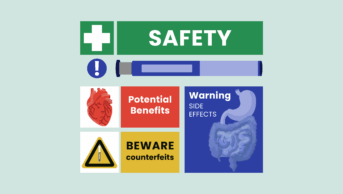
pikselstock / Alamy Stock Photo
Infection is the most common reason for hospitalisation of patients taking clozapine, accounting for a quarter of admissions, a study published in Therapeutic Advances in Psychopharmacology has found.
The researchers said the finding was “in contrast” to safety protocols and clinical focus surrounding “the well-known, but rare side effects of clozapine such as agranulocytosis or myocarditis”.
The study, published on 23 December 2022, was a retrospective analysis of 114 separate admissions to King’s College Hospital, London, of 87 patients prescribed clozapine over a 12-month period between 2018 and 2019.
All patients who were taking clozapine in any formulation at the time of admission to hospital were included in the study, with the median time since starting clozapine found to be nine years.
Through their examination of the patients’ records, the researchers found that the most common presenting complaint on admission was a form of neurological complaint, such as confusion or a fall.
However, at the point of discharge, the most frequent primary diagnosis given was infection (25%), most of which were respiratory infections (57%).
The authors highlighted that prescribers often worry about agranulocytosis or myocarditis, rather than infection, in patients taking clozapine and “guidelines and mandatory blood test monitoring systems are used to identify these adverse effects quickly”.
But the researchers also found that clozapine plasma concentrations were not routinely measured. In total, 18 (16%) patients had one or more plasma concentrations measured during their admission, 14 of which were within the first 24 hours after admission.
The authors said that this was “despite some of the reasons for admission potentially being caused by clozapine toxicity”.
“Furthermore, infection is known to cause clinically significant increases in clozapine plasma concentrations in some patients due to reduction in CYP1A2 enzyme activity during periods of inflammation,” they wrote.
“For this reason, monitoring of plasma concentrations during periods of severe infection and consideration of temporary dose reduction are recommended by many experts.”
The authors said that all patients taking clozapine who are admitted to hospital for medical treatment should have their plasma concentration measured at least on admission, and then as clinically indicated.
Ciara Ni Dhubhlaing, chief pharmacist at St. Patrick’s University Hospital, Dublin, said the study was “substantial” in what it added to existing knowledge of physical health morbidity in patients prescribed clozapine.
“There is a focus on thrombocytopenia as the major risk with clozapine but that risk is small and well managed by compulsory FBC [full blood count] monitoring, in contrast with the risks of gastrointestinal hypomobility causing severe constipation or bowel obstruction, and hypersalivation as a risk factor for respiratory infections such as aspiration pneumonia,” she said.
Dhubhlaing added that constipation and hypersalivation along with weight gain and sedation could and should be actively managed in primary care and community pharmacies as well as in specialist services.
“Actively reviewing clozapine dosing with the aid of plasma level monitoring and history taking (particularly changes to smoking, which can alter plasma levels by up to 70%), as well as symptom review, can aid dose minimisation to reduce adverse effects and maximisation for the benefit of the patient’s mental health,” she said.
Nominate an early-careers researcher today for the OPERA23 award
Help us in our search for outstanding early-career researchers who are accomplishing great things in pharmacy and pharmaceutical science.
For entry criteria and details on how to nominate a colleague, click here.
1 comment
You must be logged in to post a comment.



Informative.